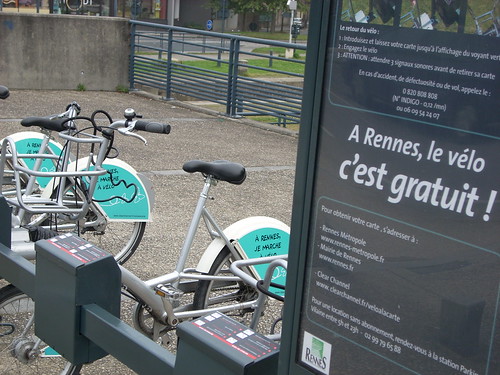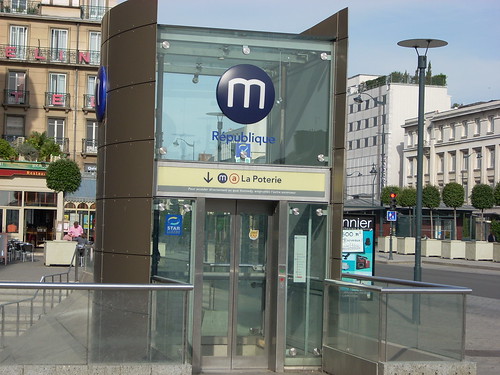It’s easy for those with anti-car sentiments in North America to yell “everything’s better in Europe”, as if the generalization was a universal truth. But Rennes, France provides an example of a town that is doing its best to make life easy for those without a car. Montréal could take some notes.
Rennes is considered the gateway city to the Northwestern region of Brittany, and also serves as its capital. The city is, like most mid-sized towns in France, quite old. Many buildings in the city’s old town (about twice the size of the Old Port and still serving as the city’s central core) date back to the Middle Ages and Renaissance period. So transportation planners in Rennes faced this problem: how do you serve the residents that live outside the downtown without destroying the inner core?
Rennes’ narrow wobblestone roads are a not-so-disguised blessing; they are almost undrivable. That said, the city should be given credit for going a step further and limiting most downtown roads to buses and bicycles. While there are a few large boulevards running through downtown (the French love their boulevards), there seem to be two pedestrian-only streets for every such car artery. Bike lanes are prevalent throughout the rest of the city as well. What is also pleasing are the 16 bike racks dispersed throughout town, which hold cruiser-style bikes that are free for residents and free with a deposit for visitors. And so, in some parts of town, you can walk for 15 mintues without seeing a car being driven. That’s a sight I have never seen in North America.

Perhaps what is most impressive, however, is what’s lying under the streets. Rennes, with a population just over 200,000 in the city proper (think Victoria or Saskatoon), has a metro. Opened in 2002 at the cost of $500M, the small driverless system consists of one line and 15 stops. And it runs like clockwork. They also seemed to have solved the “jumper” problem by installing an outside set of doors that open simultaneously to the train’s doors. All in all, though still new, it is an extremely efficient metro.


So how can Montréal take notes from this? While it’s difficult to compare cities of such different sizes and economic states (one with a shiny new metro, the other with falling bridges), some things seem obvious.
Montreal needs more pedestrian streets. As in Rennes, Montréal’s pedestrian streets (namely Prince-Arthur and Duluth) are always packed and generating revenue. Traffic concerns always hinder the creation of more, but why not try it with an area that is well-served by public transit, such as St-Denis between De Maisonneuve and Sherbrooke? Drivers deal with it during Just for Laughs and seasonal construction. Why not make it car-free for the summer?
Make a commitment. While its obvious that the situation in Rennes is less unwieldy, it’s clear they’ve made a commitment to supporting alternatives to cars. Montréal’s public transportation is well laid out, though infrequent. Biking to the other side of town via downtown is too much of an adventure. Bikers would be more forgiving of occasional foot-dragging (on, say, a de Maisonneuve bike lane) if there were more evidence that work was being done. One can hope that in the near future the city of Montréal will start to show an interest in these things as Rennes does.

3 comments
Duluth isn’t a pedestrian street; it’s open to cars 24/7. It even has street parking. Maybe you meant to say La Gauchetière St. in Chinatown.
I personally think that St. Denis would make a bad candidate for pedestrianization. So would most of Montreal’s other major streets. They’re too wide to justify permanent closure to cars; they’re successful only when pedestrianized at certain times.
That’s why I think that Montreal should adopt a pedestrianization program similar to that of Hong Kong. There, a handful of small streets are fully pedestrianized, but many commercial streets are pedestrianized on a part-time basis, usually during the evenings and weekends when pedestrian traffic is heaviest.
Full-out pedestrianization only works in very specific circumstances, especially in a city with harsh winters like Montreal.
You’re right, Duluth isn’t pedestrianized, though in my mind it might as well be. While St-Denis is a bit wide (is it four lanes with parking?) I’ll bet you could fill it pretty nicely most evenings in the summer. If you made it pedestrian more people would go too, though you might have to spruce it up a bit.
Right, and to me that just means that St. Denis should be pedestrianized at certain times, like during summer evenings. A permanent pedestrianization would probably be a failure because the street would become all but deserted in the winter.